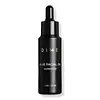What's inside
What's inside
 Key Ingredients
Key Ingredients

 Benefits
Benefits

 Concerns
Concerns

 Ingredients Side-by-side
Ingredients Side-by-side

Prunus Armeniaca Kernel Oil
MaskingHelianthus Annuus Seed Oil
EmollientLimnanthes Alba Seed Oil
Skin ConditioningSqualane
EmollientPrunus Amygdalus Dulcis Oil
Skin ConditioningVitis Vinifera Seed Oil
EmollientSimmondsia Chinensis Seed Oil
EmollientRosa Canina Fruit Oil
EmollientArgania Spinosa Kernel Oil
EmollientTurtle Oil
Skin ConditioningPunica Granatum Seed Oil
EmollientTar Oil
MaskingRibes Nigrum Seed Oil
EmollientTocopherol
AntioxidantPrunus Armeniaca Kernel Oil, Helianthus Annuus Seed Oil, Limnanthes Alba Seed Oil, Squalane, Prunus Amygdalus Dulcis Oil, Vitis Vinifera Seed Oil, Simmondsia Chinensis Seed Oil, Rosa Canina Fruit Oil, Argania Spinosa Kernel Oil, Turtle Oil, Punica Granatum Seed Oil, Tar Oil, Ribes Nigrum Seed Oil, Tocopherol
Nigella Sativa Seed Oil
EmollientRosa Canina Fruit Oil
EmollientCalophyllum Inophyllum Seed Oil
AntimicrobialHelianthus Annuus Seed Oil
EmollientSymphytum Officinale Root Extract
Skin ConditioningNigella Sativa Seed Oil, Rosa Canina Fruit Oil, Calophyllum Inophyllum Seed Oil, Helianthus Annuus Seed Oil, Symphytum Officinale Root Extract, Olea Europaea Leaf Extract, Lavandula Angustifolia Oil, Simmondsia Chinensis Seed Oil, Melaleuca Alternifolia Leaf Oil, Helichrysum Italicum Flower Oil, Matricaria Recutita Flower Oil, Rosmarinus Officinalis Leaf Extract
 Reviews
Reviews

Ingredients Explained
These ingredients are found in both products.
Ingredients higher up in an ingredient list are typically present in a larger amount.
Helianthus Annuus Seed Oil is the oil derived from the seeds of a Sunflower. Sunflower seed oil is non-fragrant. It is an emollient, meaning it helps to soften the skin.
Sunflower seed oil contains many fatty acids. The fatty acids found in sunflower seeds include (from highest amount to least): linoleic acid, myristic acid, palmitic acid, stearic acid, arachidic acid, oleic acid, and linolenic acid.
These fatty acids help the skin create ceramides. Ceramides play a role in repairing the skin barrier.
Helianthus Annuus Seed Oil helps moisturize the skin. This in turn helps the skin look more rejuvenated and smoother.
Sunflowers are rich in vitamin E.
Historians believe Indigenous cultures of North America domesticated sunflowers before corn. Thus they relied on sunflower oil for a variety of uses. One such use is moisturizing skin and hair.
Sunflower seed oil may not be fungal acne safe. We recommend speaking with a professional if you have any concerns.
Learn more about Helianthus Annuus Seed OilRosehip Oil is a non-fragrant plant oil. Rosehips are a fruit from a rose bush and are edible. This oil has skin conditioning and hydrating properties.
Rosehip contains Vitamin C, Vitamin E, fatty acids and linolenic acids. These nourish your skin barrier. Having hydrated skin may help reduce the appearance of fine-lines and wrinkles.
Another great component of Rosehip Oil is Vitamin A, or retinol. Vitamin A encourages your skin to create more collagen.
Rosehip oil may help with reducing pigmentation. The lycopene and beta-carotene have skin-lightening properties. However, more studies are needed to confirm this.
Learn more about Rosa Canina Fruit OilThis oil comes from the seeds of the desert shrub called Jojoba. It is more commonly known as jojoba oil, a non-comedogenic oil.
Jojoba oil does not contain fragrance and has many fatty-acids, making it a great soothing ingredient.
It also contains Vitamin E, a great moisturizing ingredient. Vitamin E is also an antioxidant and protects your skin against oxidative damage.
This ingredient humectant properties, meaning it helps draw moisture from the air. This helps keep your skin hydrated.
While jojoba has antibacterial properties, it is only able to kill some strains of bacteria.
Studies also show it helps in wound healing. In fact, Indigenous cultures have used jojoba as a moisturizer and to help treat burns for centuries.
Fun fact: Jojoba oil similar to natural human skin sebum, so it has a great effect on dry skin. It is also promising with helping to regulate sebum production.
Due to its fatty acid content, Jojoba oil may not be fungal acne safe. We recommend speaking with a professional if you have any concerns.
Learn more about Simmondsia Chinensis Seed Oil